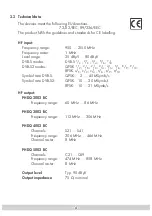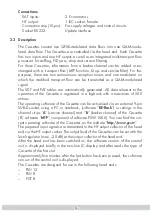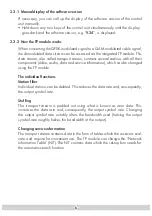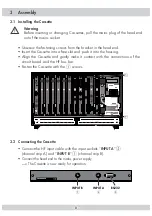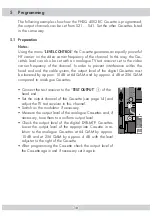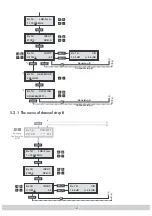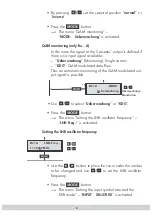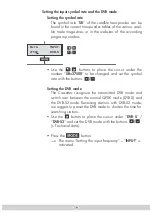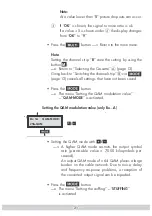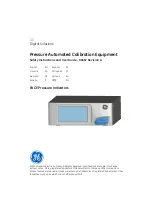
- 7 -
- 7 -
2.3.3 Explanation of the term “symbol rate”
High-quality modulation methods like QPSK and QAM can encrypt several
bits as a single transferred and received symbol. The user data stream contains
the audio and video signals of a station and is thus permanently assigned. If
the value of the modulation and therefore the number of bits per symbol is in-
creased, the symbol rate falls compared to the user bit rate.
Formulae for calculating the output symbol rate “
SR (A)
” at a fixed input symbol
rate “
SR (E)
” and “
FEC
”.
256-QAM:
SR (A)
= FEC x
1
/
4
x SR (E)
128-QAM:
SR (A)
= FEC x
2
/
7
x SR (E)
64-QAM:
SR (A)
= FEC x
1
/
3
x SR (E)
32-QAM:
SR (A)
= FEC x
2
/
5
x SR (E)
16-QAM:
SR (A)
= FEC x
1
/
2
x SR (E)
4-QAM:
SR (A)
= FEC x
1
/
1
x SR (E)
Example:
Output symbol rate 64-QAM, FEC=
3
/
4
,
Input symbol rate SR (E) = 27,500 kilosymbols per second
SR (A)
=
3
/
4
x
1
/
3
x 27,500 kilosymbols/s
SR (A)
=
6,875 kilosymbols/s
Note:
If no “FEC” is stated in the station lists, it can be assumed to be
“FEC =
3
/
4
”.
Reception from a transponder with a very low symbol rate
(SCPC station)
The extremely low data rate means that the output symbol rate is very low. If
there are reception problems with different digital receivers, set QAM modula-
tion with stuffing to a higher value.
Defined symbol rates
Some cable operators specify a fixed symbol rate (e.g. 6,900 kilosymbols per
second).




